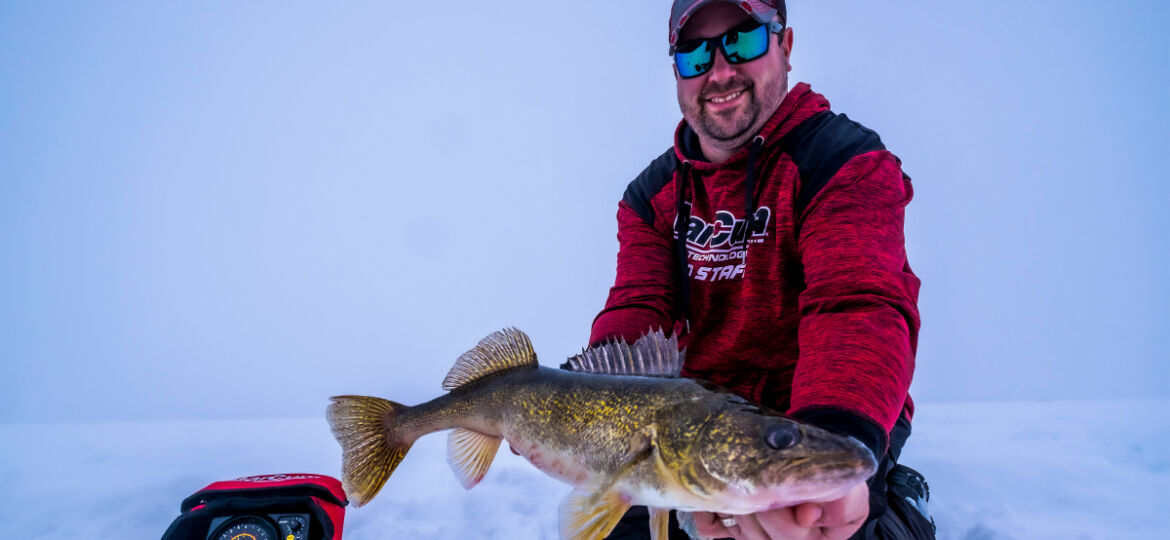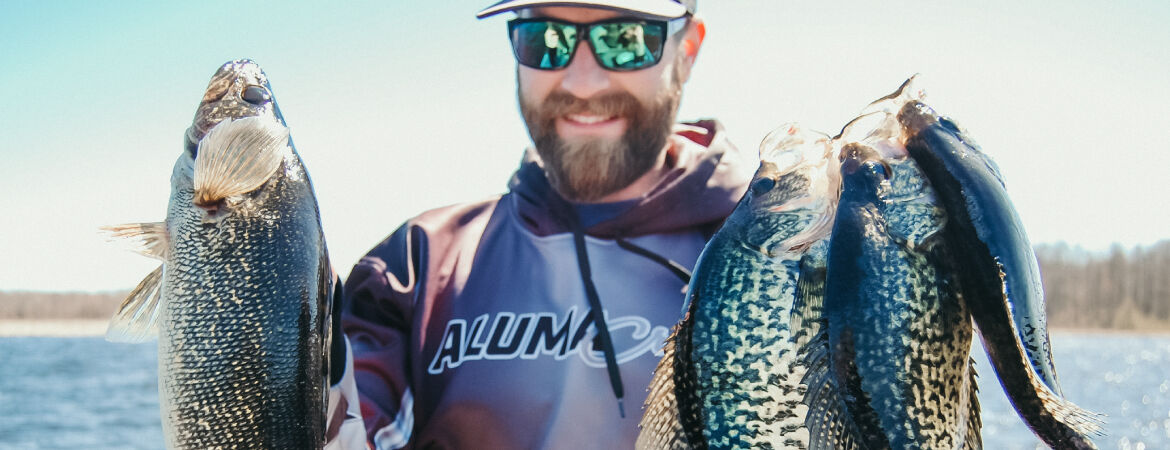Whether you’re ready for it or not, the ice season is coming to an end sooner than later. For many of us anglers, it was an odd season riddled with less-than-ideal conditions – including lack of ice and excess amounts of snow and ice. With snow melt in full force and deteriorating ice conditions, we can’t help but think of what’s coming next.
We’re nearing the end of walleye season in MN, and things have gotten a bit tougher. Snow is deep and ice is thick(er), and the amount of available light at depth has been cut dramatically. Your early season haunts are likely nowhere near where you are ice fishing now, and at this point, it’s more about just getting bites rather than talking about how many you’re catching.
Every year, a new set of anglers both young and old learn to use ice fishing sonar or flashers for the first time. That said, I encounter many anglers on the hardwater each year that still have their ice sonar depth finder on default factory settings from when they bought the unit 10 years ago. Whether you’re brand new to the game, or it’s old-hat, here are some answers to age old questions along with new ones to keep it interesting and catch more fish.
Who doesn’t have boxes of jigs laying around? No matter the species, it could be the most universal, widely copied, and versatile lure of all time. If we’re talking live bait, it’s the best delivery method for meat that I know of. If plastics, well there’s usually a jig involved here too.
Starting with a standard jig-head, you have to think about what you’d like to do with it. If you’re threading on a fathead minnow, a will be the logical choice. The same can’t be said if you’re looking to fish plastics, as plastics fish best with an aggressive wire keeper.
As for other features and color, think about the water clarity you’ll be fishing in. Anything with a blade or propeller adds flash and vibration, which may be a necessary part of the presentation. Big minnows call for a , and suspended fish call for a that rises above a weight on the bottom. So many jigs, so many scenarios, but you need to match the style of jig to the type of fishing you’ll be doing.
Water temperatures that build into the high 60 and 70 degree marks will definitely get fish moving, and that usually coincides with a few hatches.
Bugs crawling out of the deep mud get rafted against the main-lake structure, and signify some of the initial pushes to offshore humps, bars, and reefs. It’s often when casual walleye anglers, or those who see early mixed bags of walleyes with crappies and gills, stop catching them.
Anglers don’t always follow, sometimes because they’re not required to. This is a dynamic time of year as the summer food chain ramps up production. That means anglers don’t always have to look deep to find fish, and several patterns can be going at the same time.
If you’re a crappie angler, one of the best bites of the year has come and gone with the early spring crappie bite. For bluegill fans, the best is yet to come, as we move from a shallow water period for one species into another.
There’s no doubt that the spawning season for crappies and bluegills offer some great opportunities for skinny water panfishing, and even sight fishing, which makes fishing feel like it did when you were a kid.
Bobbers and small jigs are plopped into any good looking developing weeds or brushy areas, only to drop with an aggression not seen since the previous year’s fishing It’s hard not to be excited about it.
Everyone wants to be successful on the water. We all love to post on social media and to talk about the fun we had catching fish and spending time together with friends and family. The old adage says, a bad day fishing is still better than a day of work, but no one really likes having a bad day of fishing.
Once you dive into this worthy hobby you will quickly realize that a bad day is relative. For the beginner it could be not catching a single fish. For the guide it could be not filling out a limit. And for the professional it could be not making a top-ten but catching 40-50 target species fish during the eight hour day.
It’s amazing how many anglers have an underwater ice fishing camera for winter use, and forget to pack it in the boat for fishing opener. In fact, open-water applications abound when it comes to everything from species identification, to finding green weeds, or simply identifying water clarity traits from one end of the lake to another.
The fact that now your underwater camera for fishing can be so much more mobile is a major benefit to its use, and the fish-finding information you unlock with it is rather limitless. Here’s just a few ways and reasons to get more use from your winter camera, come spring, summer and fall.
It’s this time of year when our ice sonar is swapped for long rods and soft water, but that doesn’t mean your MarCum should be put in the back corner of the garage. All sonar systems, digital or mechanical styles, offer keys and cues that help anglers be more successful on the water
That’s especially true in small crafts like kayaks, canoes, or small skiffs where a larger, permanently mounted traditional LCD display isn’t in play. Here’s just a few ways to trick your craft, whatever it may be, and get the very most from your MarCum.
It’s a magical time of year. The ice on the lakes is pretty much absent. The landscapes that were not so long ago covered in snow now show glimpses of life again. Grass is turning greener, plants are blooming, birds are chirping. Spring has sprung.
To many anglers that means one thing – the Wisconsin Fishing Opener is coming. The Wisconsin Fishing Opener is traditionally on the first Saturday in May. This year it falls on











